-
 Bitcoin
Bitcoin $117,576.6195
-0.21% -
 Ethereum
Ethereum $2,938.5668
-1.35% -
 XRP
XRP $2.7699
4.60% -
 Tether USDt
Tether USDt $1.0003
0.01% -
 BNB
BNB $688.1624
-0.01% -
 Solana
Solana $160.5113
-1.95% -
 USDC
USDC $0.9999
0.01% -
 Dogecoin
Dogecoin $0.1976
-0.70% -
 TRON
TRON $0.3008
1.54% -
 Cardano
Cardano $0.7159
-2.16% -
 Hyperliquid
Hyperliquid $46.2240
2.04% -
 Stellar
Stellar $0.3966
22.03% -
 Sui
Sui $3.3928
-3.11% -
 Chainlink
Chainlink $15.1204
-2.43% -
 Bitcoin Cash
Bitcoin Cash $515.1741
-1.19% -
 Avalanche
Avalanche $20.8130
-0.90% -
 Hedera
Hedera $0.2001
-2.12% -
 UNUS SED LEO
UNUS SED LEO $9.0522
0.72% -
 Shiba Inu
Shiba Inu $0.0...01316
-2.01% -
 Toncoin
Toncoin $2.9843
0.61% -
 Litecoin
Litecoin $92.6745
-2.71% -
 Polkadot
Polkadot $3.9483
-0.06% -
 Monero
Monero $328.5347
1.10% -
 Dai
Dai $0.9998
0.01% -
 Ethena USDe
Ethena USDe $1.0006
-0.01% -
 Uniswap
Uniswap $8.3739
-6.50% -
 Bitget Token
Bitget Token $4.4241
-1.99% -
 Pepe
Pepe $0.0...01222
-3.96% -
 Aave
Aave $300.5203
-3.61% -
 Bittensor
Bittensor $382.2607
-1.92%
What is the state explosion of blockchain? What are the solutions?
State explosion in blockchain causes scalability issues due to growing data; solutions like pruning, state rent, sharding, and layer 2 approaches help mitigate this.
Apr 29, 2025 at 02:21 pm
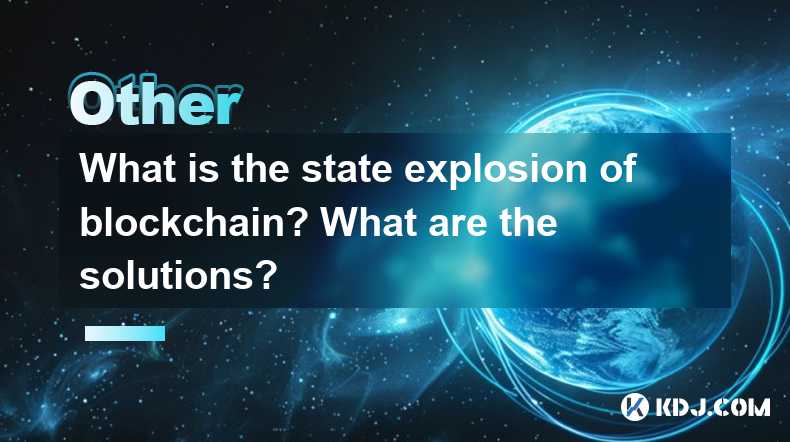
The state explosion of blockchain refers to the rapid increase in the size and complexity of the blockchain's state as more transactions are processed and new blocks are added. This phenomenon can lead to significant challenges in terms of storage, processing power, and scalability. In this article, we will explore the concept of state explosion in blockchain, its implications, and the various solutions that have been proposed to mitigate this issue.
Understanding State Explosion in Blockchain
State explosion in blockchain occurs when the amount of data required to maintain the state of the network grows exponentially. This state includes all the necessary information about account balances, smart contract states, and other relevant data that must be stored and updated with each new block. As the number of transactions increases, so does the size of the state, which can lead to significant scalability issues.
The primary reason for state explosion is the immutable nature of blockchain. Once data is recorded on the blockchain, it cannot be altered or deleted, which means that the state continuously grows over time. This is particularly problematic for blockchains that support complex smart contracts, as each interaction with a smart contract can result in a new state that needs to be stored.
Implications of State Explosion
The implications of state explosion are far-reaching and can impact the overall performance and usability of a blockchain network. Increased storage requirements are one of the most immediate effects, as nodes on the network need to store larger amounts of data. This can lead to higher hardware costs and can make it more difficult for new nodes to join the network.
Another significant implication is the increased processing time for transactions. As the state grows, the time required to validate and process transactions can increase, leading to slower transaction speeds and higher latency. This can negatively impact the user experience and can make the blockchain less suitable for applications that require fast transaction processing.
Additionally, state explosion can lead to scalability issues, as the network may struggle to handle a high volume of transactions. This can limit the growth of the blockchain and can make it less competitive compared to other technologies.
Solutions to State Explosion
Several solutions have been proposed to address the issue of state explosion in blockchain. These solutions aim to reduce the size of the state, improve processing efficiency, and enhance the overall scalability of the network.
Pruning
Pruning is a technique used to reduce the size of the blockchain by removing unnecessary data. In the context of state explosion, pruning can involve removing old or irrelevant state data that is no longer needed. This can help to reduce the storage requirements for nodes and can improve the overall performance of the network.
To implement pruning, blockchain developers can use various strategies, such as:
- State pruning, which involves removing old state data that is no longer needed.
- Transaction pruning, which involves removing old transaction data that has been fully processed and is no longer relevant.
- Block pruning, which involves removing old blocks that are no longer needed for validation purposes.
By implementing pruning, blockchain networks can reduce the size of their state and improve their scalability.
State Rent
State rent is another proposed solution to state explosion. This concept involves charging users a fee for storing their data on the blockchain. The idea is that by incentivizing users to remove unnecessary data, the overall size of the state can be reduced.
To implement state rent, blockchain developers can:
- Introduce a fee structure that charges users for storing their data on the blockchain.
- Set a time limit for how long data can be stored without incurring additional fees.
- Implement a mechanism for users to pay the state rent fees and for the network to manage these payments.
By implementing state rent, blockchain networks can encourage users to manage their data more efficiently and can help to reduce the size of the state.
Sharding
Sharding is a technique used to improve the scalability of blockchain networks by dividing the network into smaller, more manageable pieces called shards. Each shard can process its own set of transactions and maintain its own state, which can help to reduce the overall size of the state and improve the processing efficiency of the network.
To implement sharding, blockchain developers can:
- Divide the network into smaller shards, each with its own set of nodes and validators.
- Assign transactions to specific shards based on certain criteria, such as the sender or recipient of the transaction.
- Implement cross-shard communication to ensure that transactions can be processed across different shards.
By implementing sharding, blockchain networks can improve their scalability and can help to mitigate the effects of state explosion.
Layer 2 Solutions
Layer 2 solutions are another approach to addressing state explosion in blockchain. These solutions involve processing transactions off the main blockchain, which can help to reduce the size of the state and improve the overall performance of the network.
Examples of layer 2 solutions include:
- Sidechains, which are separate blockchains that are connected to the main blockchain and can process transactions independently.
- State channels, which allow users to process multiple transactions off the main blockchain and then settle the final state on the main blockchain.
- Plasma chains, which are a type of sidechain that can process transactions in a hierarchical manner.
By implementing layer 2 solutions, blockchain networks can improve their scalability and can help to reduce the impact of state explosion.
Frequently Asked Questions
Q: How does state explosion affect the security of a blockchain network?
A: State explosion can impact the security of a blockchain network by increasing the computational resources required to validate transactions and maintain the state. This can make it more difficult for nodes to participate in the network and can potentially lead to centralization, as only nodes with sufficient resources can keep up with the growing state. To mitigate this, blockchain developers can implement solutions such as pruning and sharding to reduce the size of the state and improve the overall security of the network.
Q: Can state explosion be completely eliminated?
A: While it is not possible to completely eliminate state explosion due to the immutable nature of blockchain, various solutions can be implemented to mitigate its effects. Techniques such as pruning, state rent, sharding, and layer 2 solutions can help to reduce the size of the state and improve the scalability of the network. However, these solutions require careful implementation and ongoing management to ensure their effectiveness.
Q: How do different blockchain platforms handle state explosion?
A: Different blockchain platforms handle state explosion in various ways, depending on their design and architecture. For example, Ethereum has implemented state pruning to reduce the size of its state, while other platforms like Polkadot use sharding to improve scalability. Additionally, some platforms are exploring the use of layer 2 solutions to process transactions off the main blockchain and reduce the impact of state explosion. The specific approach taken by each platform depends on its goals and the needs of its users.
Q: What role do consensus mechanisms play in managing state explosion?
A: Consensus mechanisms play a crucial role in managing state explosion by determining how transactions are validated and added to the blockchain. Different consensus mechanisms, such as Proof of Work (PoW) and Proof of Stake (PoS), can impact the efficiency and scalability of the network. For example, PoS mechanisms can be more energy-efficient and can potentially handle larger states more effectively than PoW mechanisms. Additionally, some consensus mechanisms, such as those used in sharded networks, can help to distribute the state across multiple nodes and improve the overall scalability of the network.
Disclaimer:info@kdj.com
The information provided is not trading advice. kdj.com does not assume any responsibility for any investments made based on the information provided in this article. Cryptocurrencies are highly volatile and it is highly recommended that you invest with caution after thorough research!
If you believe that the content used on this website infringes your copyright, please contact us immediately (info@kdj.com) and we will delete it promptly.
- Bitcoin Price's Golden Number: Analyst Predicts Massive Breakout!
- 2025-07-13 02:30:12
- XRP Price Breakout: Analysts Eyeing Explosive Moves
- 2025-07-13 02:50:12
- Grayscale, AI Crypto, and Top Assets: What's the Deal?
- 2025-07-13 02:55:11
- DOGE's $0.25 Ceiling: Will the Meme Coin Break Through?
- 2025-07-13 02:30:12
- Binance, Bloomberg, and a Lawsuit Threat: CZ's Fighting Back!
- 2025-07-13 01:30:12
- Litecoin, BONK, BlockDAG Presale: Navigating the Crypto Frenzy
- 2025-07-13 00:30:12
Related knowledge
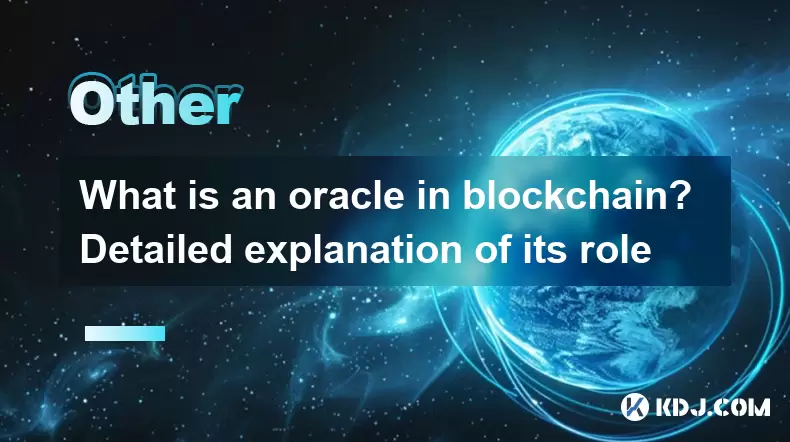
What is an oracle in blockchain? Detailed explanation of its role
Jun 21,2025 at 06:14am
Understanding the Concept of an Oracle in BlockchainIn the realm of blockchain technology, an oracle is a trusted third-party service that connects sm...
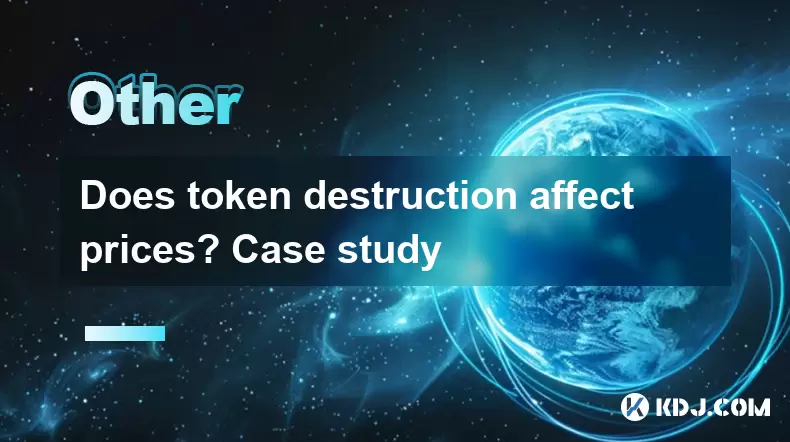
Does token destruction affect prices? Case study
Jun 22,2025 at 02:50am
Understanding Token DestructionToken destruction, commonly referred to as token burning, is a process where a portion of cryptocurrency tokens is perm...
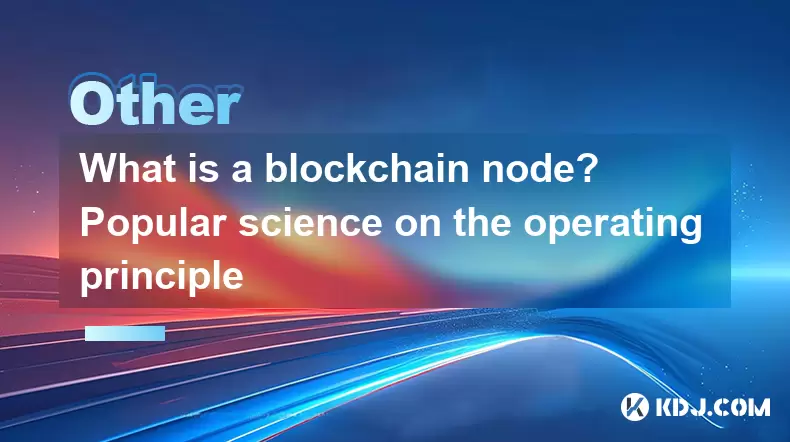
What is a blockchain node? Popular science on the operating principle
Jun 22,2025 at 11:00pm
Understanding the Basics of a Blockchain NodeA blockchain node is essentially a computer connected to a blockchain network that participates in valida...
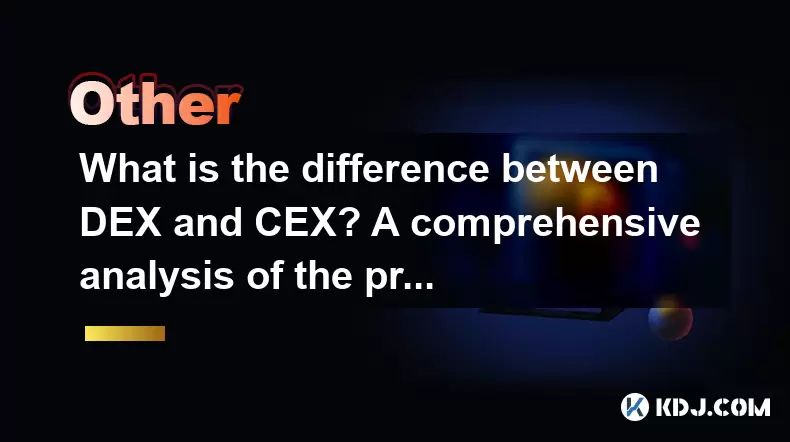
What is the difference between DEX and CEX? A comprehensive analysis of the pros and cons
Jun 24,2025 at 09:42am
What is a DEX (Decentralized Exchange)?A DEX, or Decentralized Exchange, operates without a central authority. Unlike traditional platforms, DEXs allo...
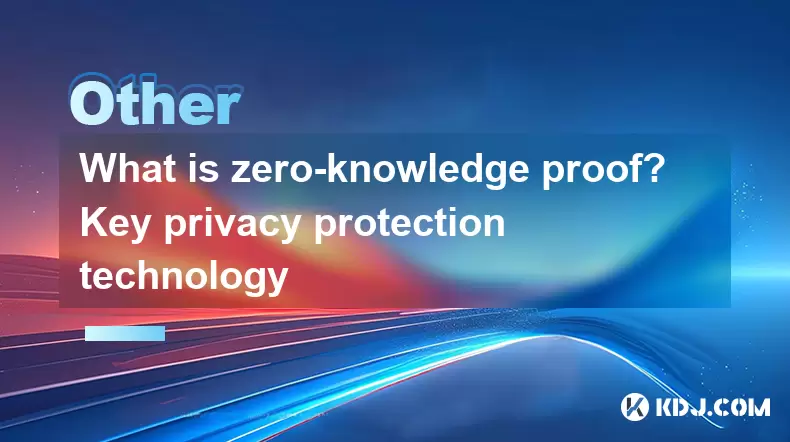
What is zero-knowledge proof? Key privacy protection technology
Jun 22,2025 at 07:29pm
Understanding Zero-Knowledge ProofZero-knowledge proof (ZKP) is a cryptographic method that allows one party to prove to another party that they know ...
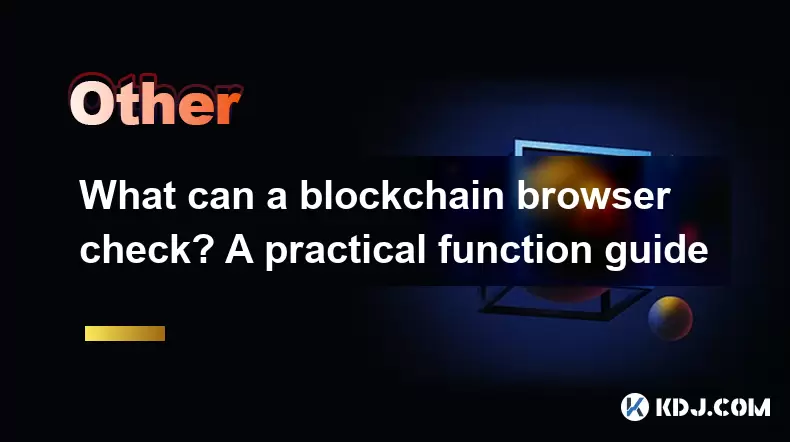
What can a blockchain browser check? A practical function guide
Jun 20,2025 at 07:35pm
Understanding the Role of a Blockchain BrowserA blockchain browser serves as a powerful tool for anyone interacting with blockchain networks. It allow...

What is an oracle in blockchain? Detailed explanation of its role
Jun 21,2025 at 06:14am
Understanding the Concept of an Oracle in BlockchainIn the realm of blockchain technology, an oracle is a trusted third-party service that connects sm...

Does token destruction affect prices? Case study
Jun 22,2025 at 02:50am
Understanding Token DestructionToken destruction, commonly referred to as token burning, is a process where a portion of cryptocurrency tokens is perm...

What is a blockchain node? Popular science on the operating principle
Jun 22,2025 at 11:00pm
Understanding the Basics of a Blockchain NodeA blockchain node is essentially a computer connected to a blockchain network that participates in valida...

What is the difference between DEX and CEX? A comprehensive analysis of the pros and cons
Jun 24,2025 at 09:42am
What is a DEX (Decentralized Exchange)?A DEX, or Decentralized Exchange, operates without a central authority. Unlike traditional platforms, DEXs allo...

What is zero-knowledge proof? Key privacy protection technology
Jun 22,2025 at 07:29pm
Understanding Zero-Knowledge ProofZero-knowledge proof (ZKP) is a cryptographic method that allows one party to prove to another party that they know ...

What can a blockchain browser check? A practical function guide
Jun 20,2025 at 07:35pm
Understanding the Role of a Blockchain BrowserA blockchain browser serves as a powerful tool for anyone interacting with blockchain networks. It allow...
See all articles

























































































